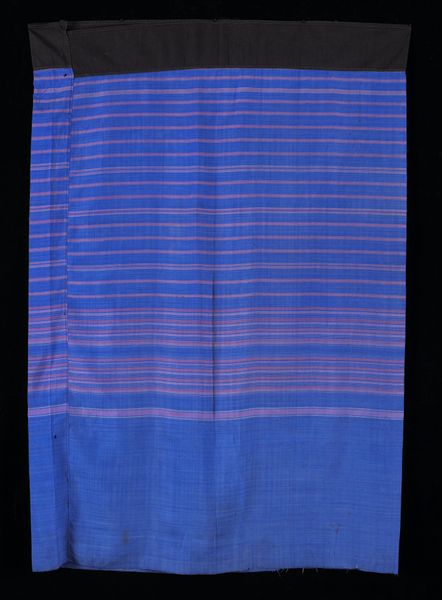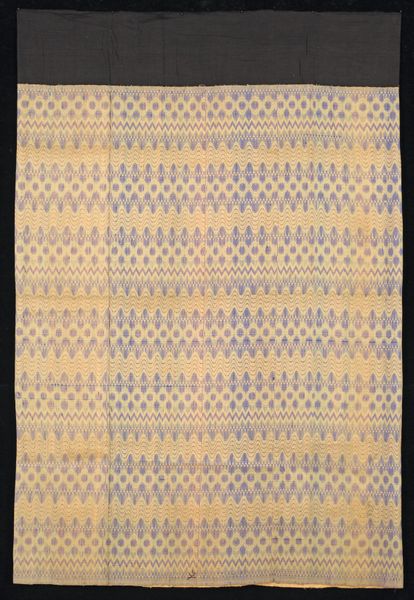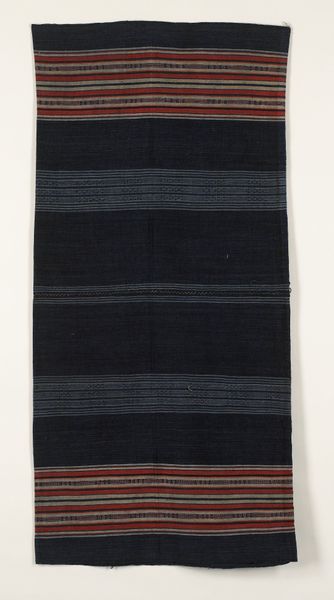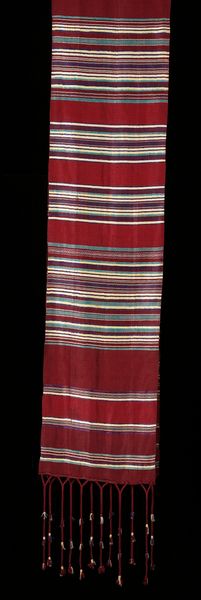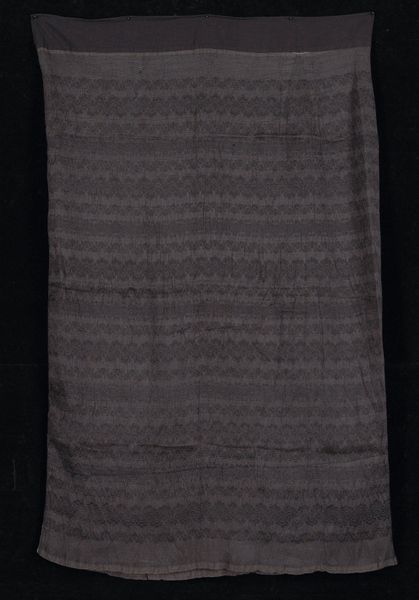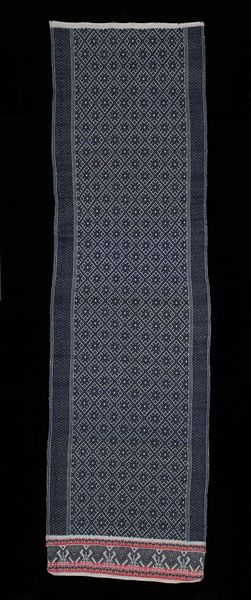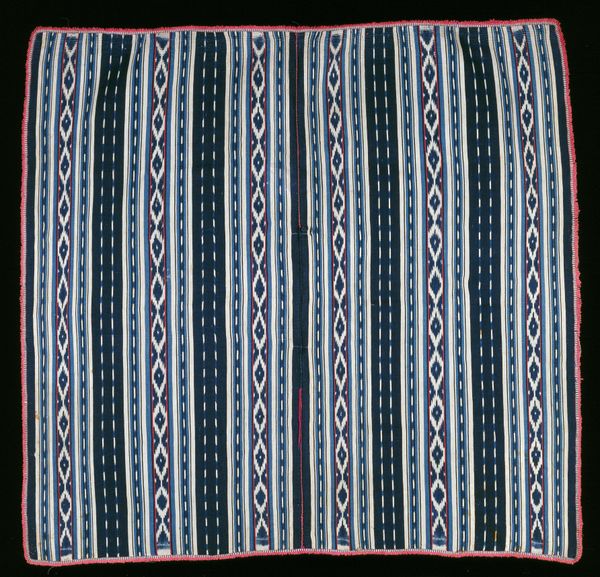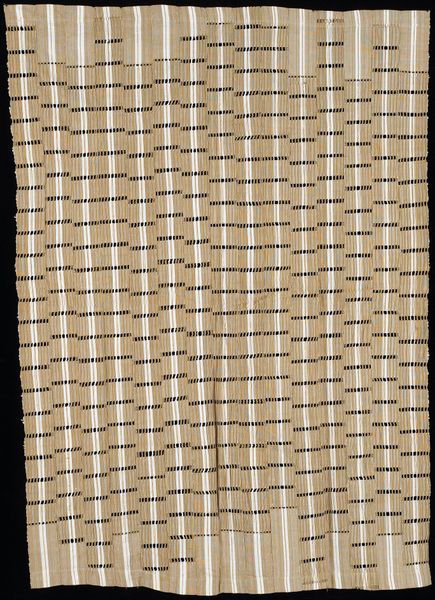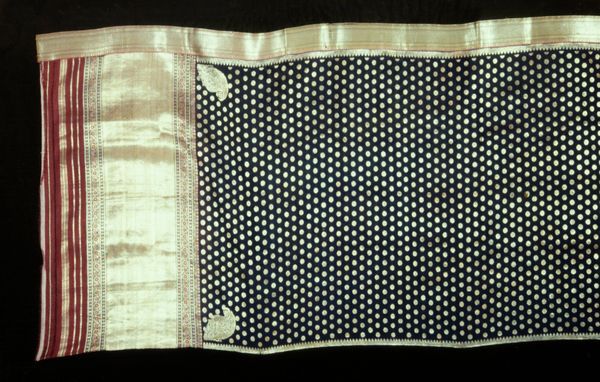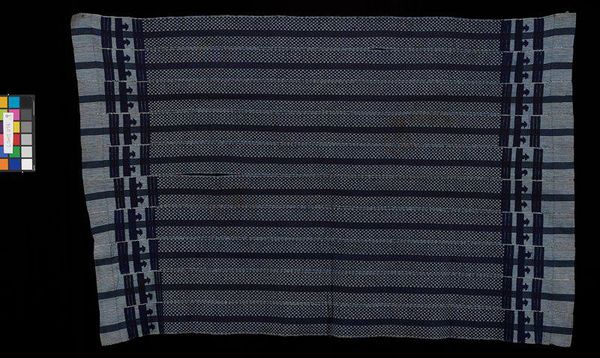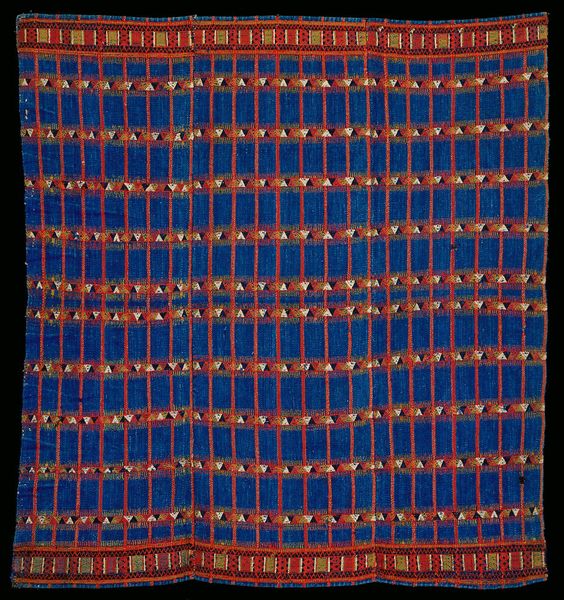
fibre-art, weaving, textile, cotton
#
african-art
#
fibre-art
#
weaving
#
textile
#
abstract
#
geometric
#
cotton
Dimensions: 59 x 120 in. (149.9 x 304.8 cm) (with fringe)
Copyright: No Known Copyright
Editor: Right, next up we have Djege Coulibaly's 'Blanket' from 1985. It's made of cotton, through fibre art and weaving techniques. The stripes are just so captivating, and the geometric patterns feel ancient. How would you begin to unpack the meaning behind this? Curator: I think we have to start with understanding its materiality. It’s crucial to consider how this woven cotton blanket operates within a specific social context. The production itself, the labor involved in creating it, tells a story. Editor: What sort of story do you think it tells? The artist? The culture? The owner of this blanket? Curator: All those narratives intertwine here. Cotton as a material carries immense historical weight, doesn't it? We see its connection to global trade networks and exploitative labor practices, alongside local West African weaving traditions. The blanket form also brings up labor and commodity, and perhaps speaks of domesticity as an object. Does the 'blanket' challenge the Western definitions of ‘art’ by foregrounding both utility and aesthetics? Editor: So, its value extends beyond visual appeal. You're pointing out that we should examine its raw material and its making, weaving it all into historical events, challenging a common "art for art's sake" idea. Curator: Exactly. The geometric abstraction, which might initially seem purely aesthetic, could reflect symbolic systems deeply embedded in the artist’s culture. Furthermore, what does it mean to see a traditionally functional and hand-made object displayed in a museum setting? Does it elevate or strip it of its original intention? Editor: That's fascinating! I hadn’t considered the shift in context affecting its interpretation. I'll definitely be looking at the materials and the "making" of artwork in new ways moving forward. Curator: Considering these objects are charged by the labor, material and cultural setting provides the richest viewing experience.
Comments
No comments
Be the first to comment and join the conversation on the ultimate creative platform.
